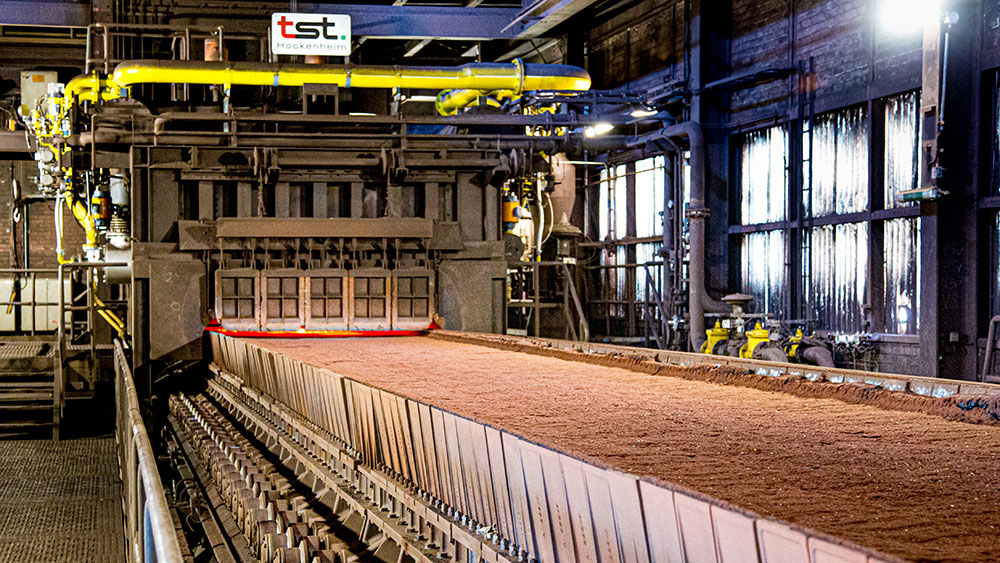The DK-process
At its location in Duisburg, DK has developed a worldwide unique process based on the classic sinter and blast furnace process. It is a process that factors in the closed-loop economy and waste laws and is by now known and accredited as the DK-process. The following outline will give you an overview of the individual areas and their functions:


 The ferrous residual materials are usually so fine that they cannot be used directly in a blast furnace. They must be first processed into a coarse material in the sinter plant. After completion of the sinter process, the crushed sinter is sifted to its defined grain size and transported to the blast furnace via conveyor belts.
The ferrous residual materials are usually so fine that they cannot be used directly in a blast furnace. They must be first processed into a coarse material in the sinter plant. After completion of the sinter process, the crushed sinter is sifted to its defined grain size and transported to the blast furnace via conveyor belts.

 The waste air from the blast furnace, the furnace gas, contains dust and is cleaned in dry and wet cleaning stages. In the cyclator, the dust settles as silt on the ground and can then be pumped out. High-purity zinc concentrate is created through a subsequent drainage.
The waste air from the blast furnace, the furnace gas, contains dust and is cleaned in dry and wet cleaning stages. In the cyclator, the dust settles as silt on the ground and can then be pumped out. High-purity zinc concentrate is created through a subsequent drainage.

 The furnace gas resulting from the DK-process is one of the main energy potentials of the company. After its purification it can be utilized for energy production in the in-house power plant.
The furnace gas resulting from the DK-process is one of the main energy potentials of the company. After its purification it can be utilized for energy production in the in-house power plant.

 During the sintering of the delivered raw materials, process-related waste gases are produced. Because the DK has committed itself to environmental protection, this gas is cleaned with the help of the newest technical insights in such a way that its subsequent emission is completely harmless.
During the sintering of the delivered raw materials, process-related waste gases are produced. Because the DK has committed itself to environmental protection, this gas is cleaned with the help of the newest technical insights in such a way that its subsequent emission is completely harmless.

 Together with the energy carrier coke, the ferrous sinter is transported into the blast furnace from above while around 1000 °C hot air is blown in from below. The further the charges descend into the blast furnace, the hotter they become until they finally transition into the molten state.
Together with the energy carrier coke, the ferrous sinter is transported into the blast furnace from above while around 1000 °C hot air is blown in from below. The further the charges descend into the blast furnace, the hotter they become until they finally transition into the molten state.

 Once the molten iron has left the blast furnace, it is filled into so-called pans and transported to the caster machine. Here it is casted into about 10kg heavy pigs and receives its solid form.
Once the molten iron has left the blast furnace, it is filled into so-called pans and transported to the caster machine. Here it is casted into about 10kg heavy pigs and receives its solid form.

 In the future the carbon drying and pulverisation plant on the neighboring site is going to supply the DK with coal dust via an air conveyor line. This dust will be fed directly into the blast furnace through the coal dust injection plant.
In the future the carbon drying and pulverisation plant on the neighboring site is going to supply the DK with coal dust via an air conveyor line. This dust will be fed directly into the blast furnace through the coal dust injection plant.

